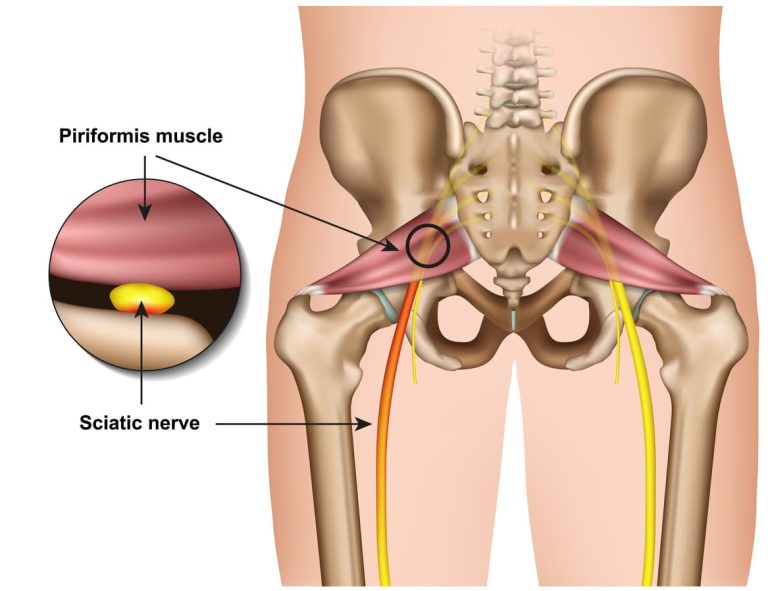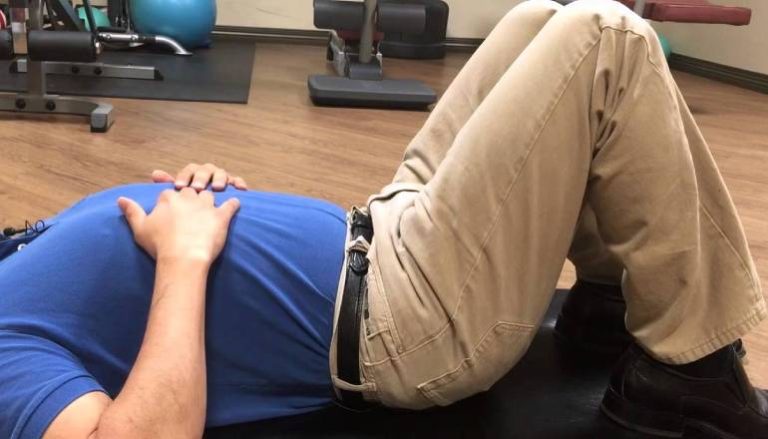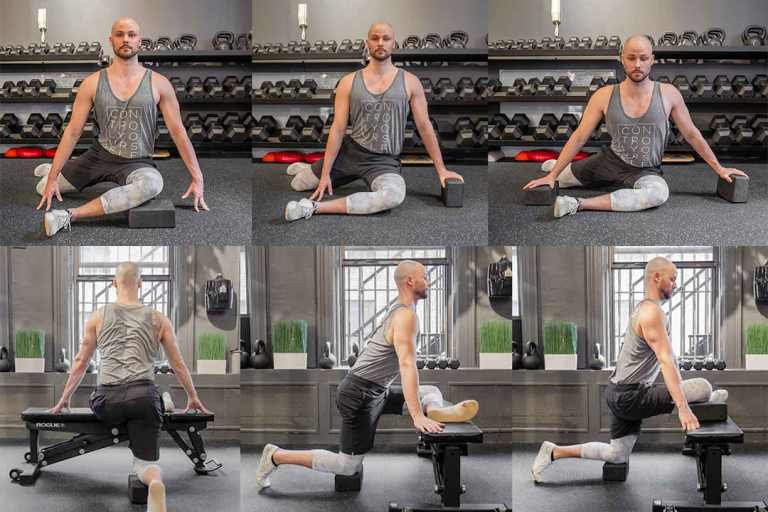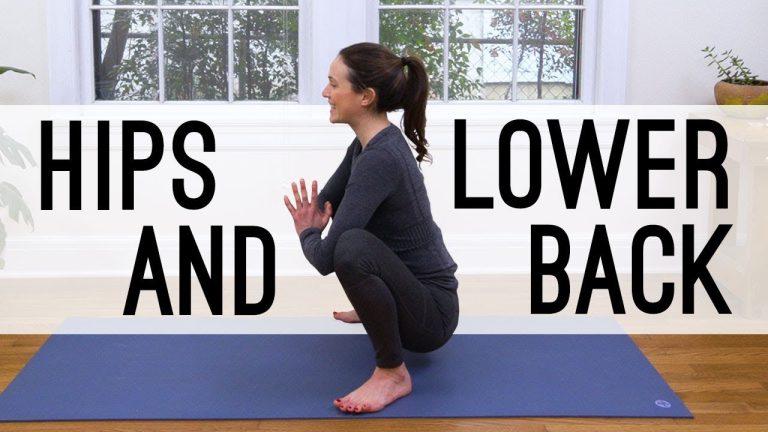The Best Yoga Poses for Psoas Muscle Health: Essential Tips for Flexibility and Stability
In today’s modern world, most of us find ourselves sitting for extended periods of time 鈥?whether it be for work, studying, or simply lounging around. Little do we realize, this sedentary lifestyle can wreak havoc on our bodies, particularly our backs.
One major culprit of this discomfort is the psoas muscle, which can become tight and constricted from excessive sitting. But fear not, for the ancient practice of yoga holds the key to unlocking relief.
Join us on a journey as we explore the best yoga poses for the psoas muscle, helping you find balance, strength, and freedom from the dreaded back pain.
best yoga poses for psoas muscle
The best yoga poses for the psoas muscle are those that strengthen and lengthen it. Poses that involve moving the legs in relation to the trunk are particularly helpful.
Balancing poses increase core strength, including the psoas. Backbends can stretch and lengthen the psoas muscle.
The constructive rest position is recommended for releasing the psoas. Actively lengthening the psoas by hugging one leg toward the trunk and extending the other leg away is beneficial.
Modified Pigeon Pose is the best for stretching the psoas and iliacus muscles. Cross-legged posture should be used for seated poses to engage the psoas properly.
Proper alignment of the pelvis is important in both seated and standing poses. Using props such as towels or blankets can open and release tension in the legs and lower back.
A standing pose with leg swinging like a pendulum can also help release the psoas. Tadasana, or Mountain Pose, can stabilize the pelvis and release the psoas.
Proper alignment and balance in poses like Tree Pose and Vrksasana are crucial. Avoid leaning into the hip or locking the knee to prevent strain on the hip ligaments.
Focusing on the solar plexus and the back of the rib cage can release the upper psoas, but maintaining stability by focusing on a downward release is important when the arms are over the head. It is essential to practice these poses with patience, perseverance, and careful attention to the sensations in the body.
Key Points:
- Balancing poses increase core strength and benefit the psoas muscle.
- Backbends can stretch and lengthen the psoas muscle.
- The constructive rest position actively lengthens the psoas by hugging one leg towards the trunk and extending the other leg away.
- Modified Pigeon Pose is the best pose for stretching the psoas and iliacus muscles.
- Proper alignment of the pelvis is crucial in seated and standing poses, using props can help release tension.
- Standing poses like Tadasana can stabilize the pelvis and release the psoas.
Sources
https://www.yogajournal.com/poses/anatomy/pelvis/release-your-psoas/
https://www.verywellfit.com/yoga-poses-for-the-psoas-3566691
https://www.fitsri.com/articles/yoga-poses-for-psoas-stretch
https://yogainternational.com/article/view/how-to-stretch-and-strengthen-the-psoas/
Check this out:
💡 Pro Tips:
1. Pay attention to your breath while practicing yoga poses for the psoas muscle. Deep, slow breaths can help release tension and increase the effectiveness of the stretches.
2. Incorporate hip-opening poses into your yoga routine to complement the stretches for the psoas muscle. Poses like Pigeon Pose, Butterfly Pose, and Extended Triangle Pose can help open up the hips and release tension in the psoas.
3. Avoid rushing through the poses and focus on breath awareness and mindful movement. This can help you connect with your body and understand the sensations in your psoas muscle better.
4. Modify the poses if needed, especially if you’re a beginner or if you have any injuries or limitations. Listen to your body and adjust the poses accordingly to avoid straining the psoas muscle.
5. Practice regularly to improve the flexibility and strength of your psoas muscle. Consistency is key, so try to incorporate these poses into your yoga routine at least 2-3 times per week for optimal results.
The Importance Of Strengthening And Lengthening The Psoas Muscle In Yoga
The psoas muscle, also known as the psoas major muscle, plays a crucial role in our body’s movement and stability. It connects the lumbar spine to the femur and is responsible for flexing the hip joint and providing support to the lower back and abdomen.
However, due to our sedentary lifestyles, the psoas muscle can become tight and shortened from prolonged sitting, leading to weak core muscles and back pain.
Incorporating yoga poses that specifically target and strengthen the psoas muscle is essential for maintaining flexibility and stability. By regularly practicing these poses, you can alleviate the discomfort caused by a tight psoas and improve your overall physical well-being.
Yoga Poses For Strengthening And Lengthening The Psoas
When it comes to strengthening and lengthening the psoas muscle, certain yoga poses are particularly beneficial. These poses involve moving the legs in relation to the trunk, which helps engage and work the psoas effectively.
One such pose is the Modified Pigeon Pose, which targets not only the psoas muscle but also the iliacus muscles. To perform this pose, start in a tabletop position and bring one knee forward, placing it behind the hand of the same side.
Extend the opposite leg straight back, and then slowly lower your torso toward the ground, feeling a deep stretch in the front of your hip. Remember to repeat on the other side to ensure both psoas muscles are worked equally.
In seated poses, such as Easy Pose or Sukhasana, it is important to engage the psoas properly by sitting in a cross-legged position. This activates the psoas and allows for a deeper stretch.
Additionally, paying attention to proper alignment of the pelvis in seated and standing poses will enhance psoas engagement. Using props such as towels or blankets to open and release tension in the legs and lower back can also aid in stretching the psoas.
Effective Balancing Poses To Increase Core Strength And Target The Psoas
Balancing poses not only help improve your overall core strength but also target and strengthen the psoas muscle. Poses like Tree Pose (Vrksasana) and Warrior III (Virabhadrasana III) challenge your balance and engage the core, including the psoas muscle.
When practicing these poses, ensure proper alignment and balance. Avoid leaning into the hip or locking the knee, as this can strain the hip ligaments.
By focusing on stability and balance, you provide a solid foundation for strengthening the psoas and reducing any strain or discomfort in the lower back.
Backbends For Stretching And Lengthening The Psoas Muscle
Backbends are excellent for stretching and lengthening the psoas muscle. Upward Facing Dog (Urdhva Mukha Svanasana) and Camel Pose (Ustrasana) are two powerful backbends that specifically target the psoas.
These poses help to counteract the tightness caused by prolonged sitting and encourage a deep stretch in the hip flexors and psoas muscle.
In backbends, it is important to maintain proper alignment and avoid excessive compression in the lower back. Actively lengthening the psoas by hugging one leg towards the trunk and extending the other leg away can create a balanced stretch.
Additionally, focusing on the solar plexus and the back of the ribcage can aid in releasing tension in the upper psoas.
The Constructive Rest Position For Releasing The Psoas
The Constructive Rest Position is a gentle and effective technique for releasing tension in the psoas muscle. To practice this position, lie on your back with your knees bent and feet hip-width apart.
Allow your legs and feet to relax completely. This position helps to restore the natural length of the psoas muscle and promotes relaxation in the entire body.
While in this position, take the opportunity to practice patience, perseverance, and careful attention to the sensations in your body. Focus on your breath and allow your body to release any tension stored in the psoas muscle.
Proper Alignment And Props To Enhance Psoas Engagement In Seated And Standing Poses
In seated and standing poses, proper alignment and the use of props can significantly enhance psoas engagement and prevent unnecessary strain. Pay attention to the alignment of your pelvis in seated poses, ensuring the weight is evenly distributed on both sit bones.
Using props such as towels or blankets can also be beneficial. Placing a prop under your sitting bones in seated poses can provide support and facilitate a deeper stretch in the psoas.
Props can also be used in standing poses to open and release tension in the legs and lower back, allowing for better engagement of the psoas muscle.
In conclusion, incorporating yoga poses that specifically target and strengthen the psoas muscle is essential for maintaining flexibility and stability. Regular practice of these poses, such as Modified Pigeon Pose, balancing poses, backbends, and the Constructive Rest Position, can help alleviate discomfort caused by a tight psoas and improve overall physical well-being.
Remember to focus on proper alignment, engage the core, and use props when necessary to enhance psoas engagement and prevent strain. By practicing with patience, perseverance, and careful attention to the sensations in your body, you can unlock the benefits of these yoga poses for the health of your psoas muscle.







